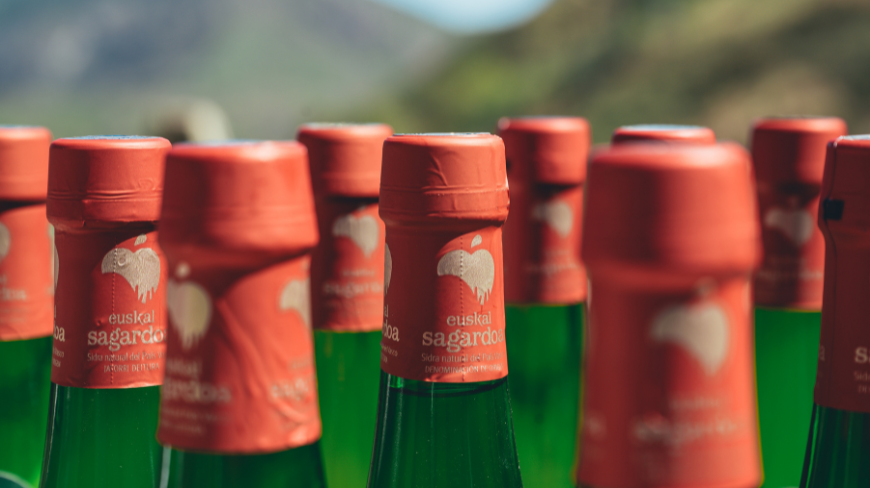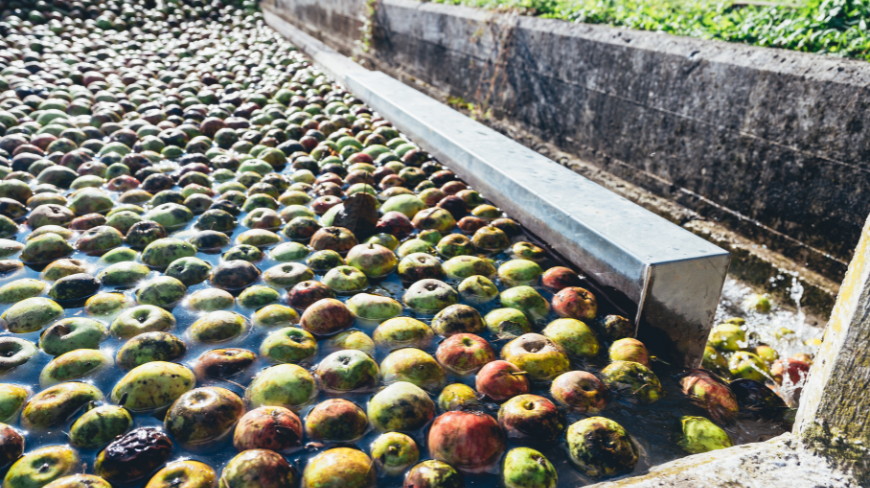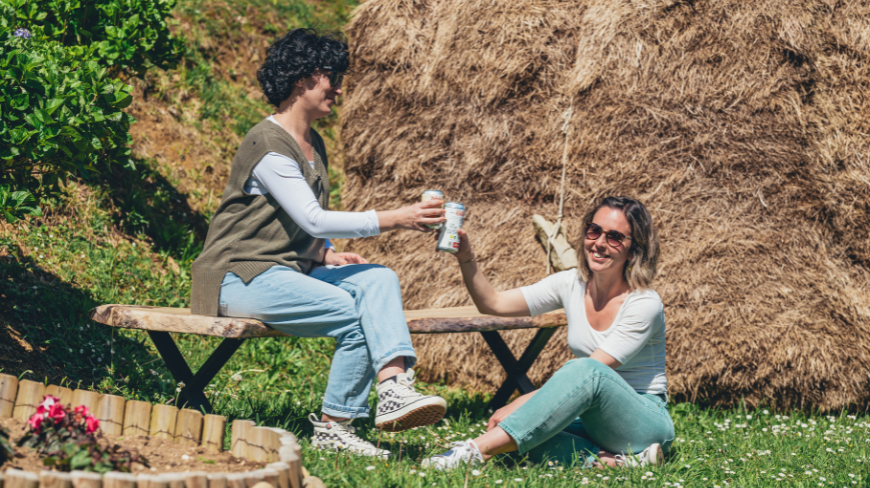How to taste Basque cider
Euskal Sagardoa: The Cider with Protected Designation of Origin from the Basque Country

Pouring Euskal Sagardoa properly is essential to fully enjoy the sensory experience.
How to Pour It?
Pouring height:
- Pour from a height of just 10–15 cm (unlike other ciders that require a high pour).
- Helps preserve the natural carbonation
- Prevents rapid oxidation
- Maintains the fruity aromas in the glass longer
What glass to use?
- A wine glass is recommended for tasting or drinking from the bottle
- Enhances the aroma and improves the balance of acidity, freshness, and texture
Serving temperature:
- Serve cool, between 10 and 14°C, never ice cold.
- Types of Euskal Sagardoa PDO Cider
What is Euskal Sagardoa Cider?
Euskal Sagardoa is a natural cider with Protected Designation of Origin (PDO), made exclusively in the Basque Country from native apple varieties. But it is more than that—it represents the essence of an ancient culture, blending tradition and sustainability, and is subject to strict quality control.
This PDO was officially recognized in 2016, ensuring that the entire cider production process—cultivation, production, and bottling—is carried out entirely in the Basque Country. Only local apple varieties are used, such as Txalaka, Urtebi Haundi, Goikoetxea, Urtebi Txiki, Moko… among others. This gives the cider its unique flavor: dry, slightly acidic, with fruity and herbal aromas.
Production Process
Euskal Sagardoa PDO is crafted with care, following traditional methods and strict quality standards. The main steps are:
- Cultivation: 100% Basque apples, sustainably grown by local producers certified by the PDO.
- Harvesting: Apples are harvested between September and November at peak ripeness.
- Crushing and Pressing: Apples are first crushed, then pressed to extract the must (juice).
- Fermentation: The must ferments naturally (with no added sulfites or gas) in wooden or stainless steel tanks for 3–4 months.
- Tasting and Bottling: The cider matures slowly between January and April, when customers visit cider houses to taste cider directly from the barrels. Once matured, it is bottled, maintaining its natural and fresh character.
Euskal Sagardoa PDO is a versatile designation of origin. Within it, you'll find different cider types:
- Natural Euskal Sagardoa
- Premium Euskal Sagardoa
- Gastronomic Euskal Sagardoa
- Euskal Sagardoa in Can
- Organic Euskal Sagardoa
It’s more than just a drink—it’s a symbol of identity, sustainability, and excellence. From careful production with native apples to the ritual of tasting, everything is designed to offer an authentic experience.
Pouring it correctly, using a proper glass, and serving it at the right temperature are key to appreciating its full potential. And if you’re curious to explore more varieties, the online store at sagardoa.eus is a perfect place to begin your journey through the richness of Euskal Sagardoa.







Comentarios
Deje su comentario